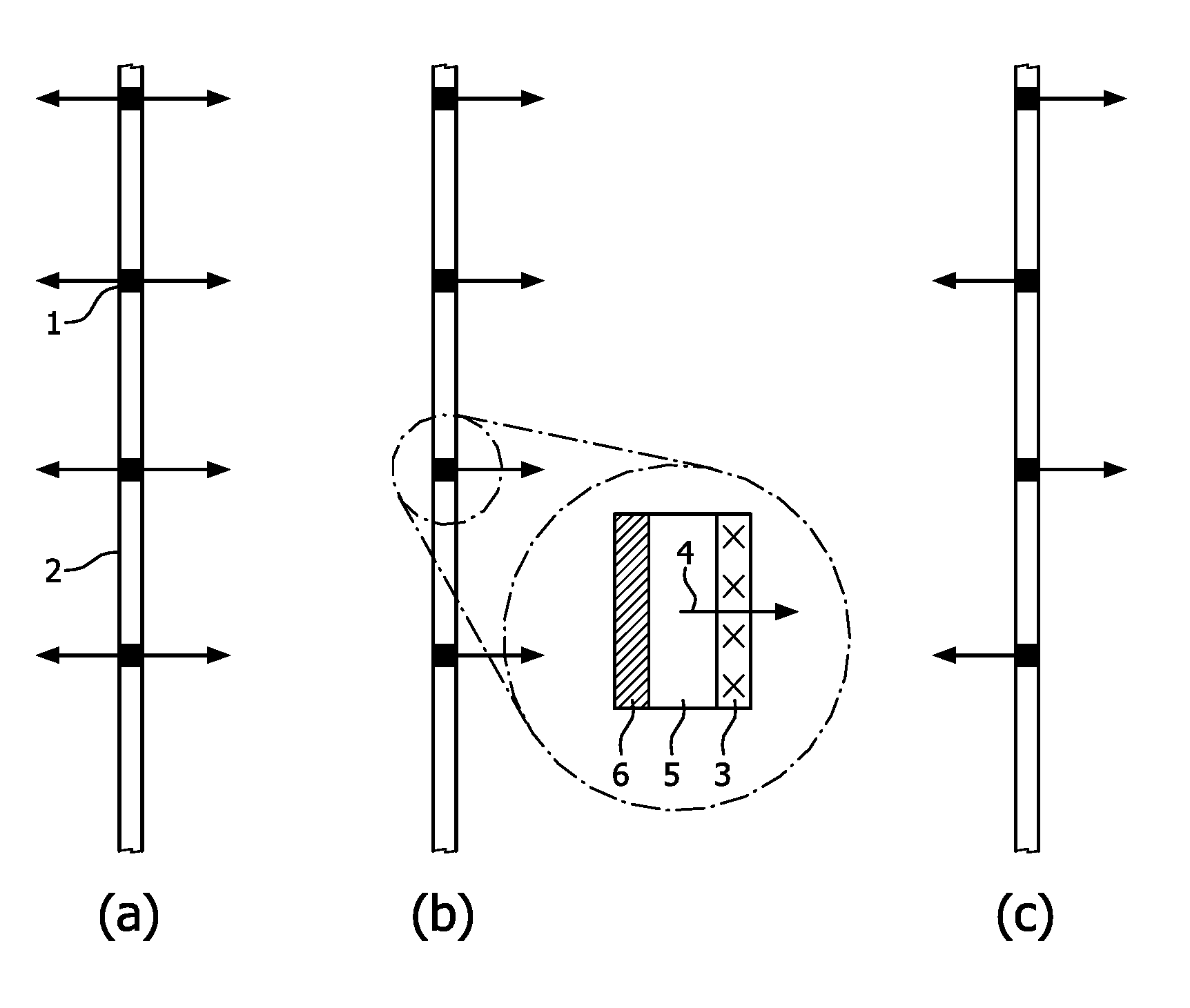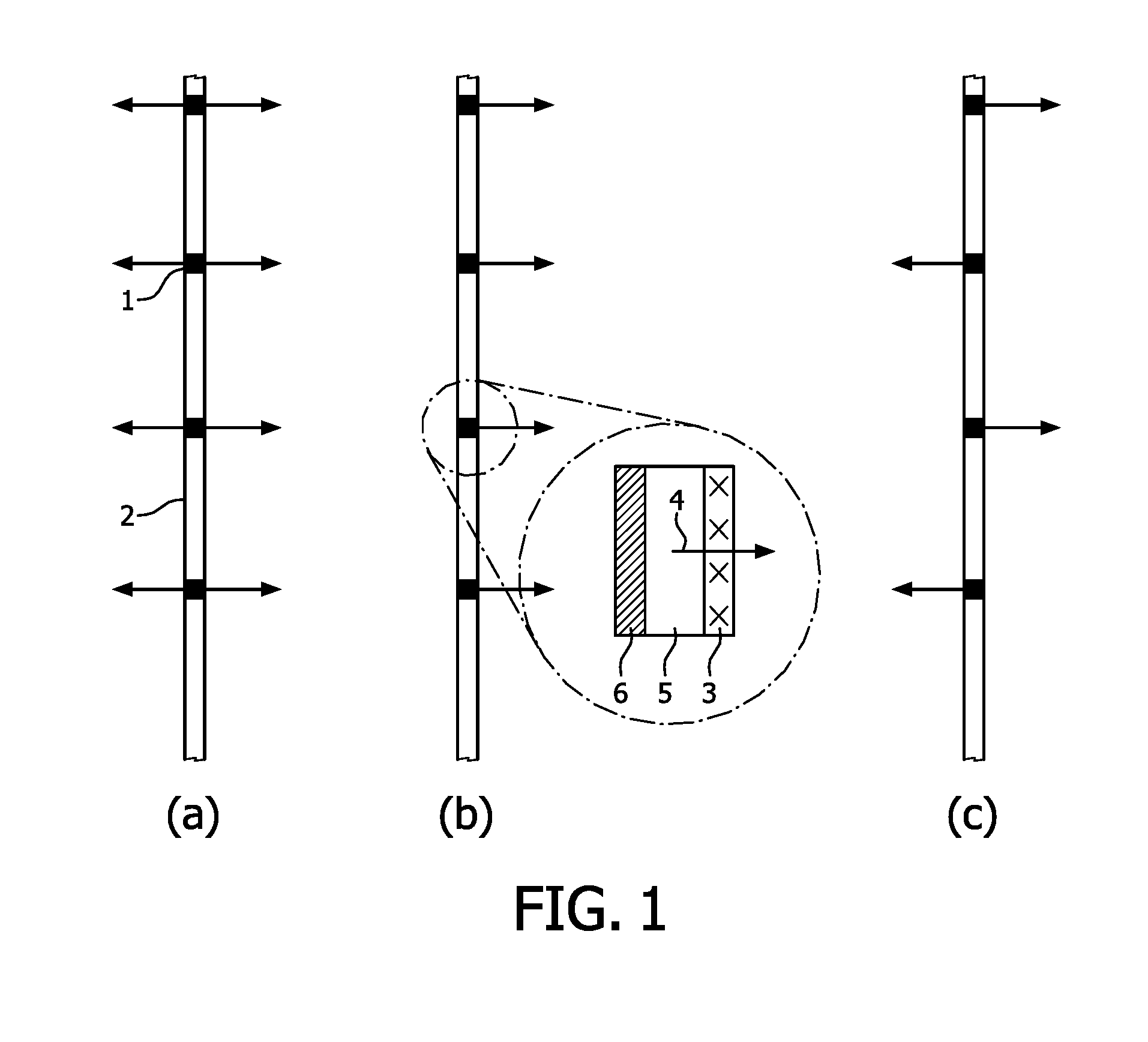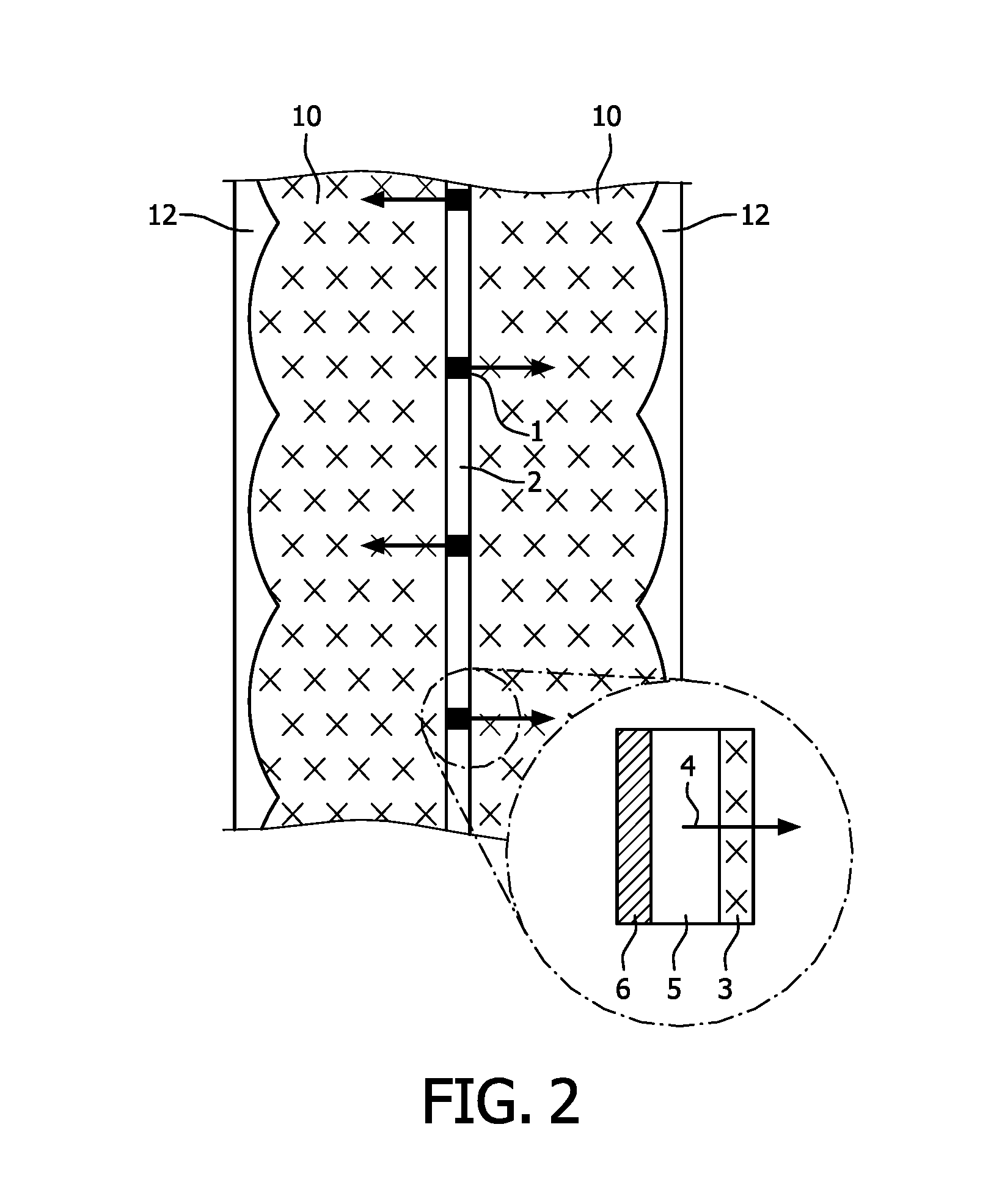Transparent display
a display and transparent technology, applied in the field of transparent displays, can solve the problems of distorted view of the image behind the display, window mode does not provide a proper view of the scene behind the window, and the display is not yet available with 3d viewing capability, so as to improve the contrast ratio of the display and reduce the effect of glar
- Summary
- Abstract
- Description
- Claims
- Application Information
AI Technical Summary
Benefits of technology
Problems solved by technology
Method used
Image
Examples
first embodiment
[0045]A first embodiment provides a single sided 2D transparent emissive display with in-plane polariser, and is based on the panel shown in FIG. 1(b).
[0046]The role of the polariser is to improve the contrast ratio of the display for a viewer on the right hand side of the display in the case that the light incident on the left hand side of the display to be transmitted by the display is polarised. This is the configuration shown in FIG. 1(b). A well-known cause of such polarisation is reflection of light by water, snow, ice or other reflective surfaces.
[0047]With a suitable choice of polariser, such as with crossed polarisation if the light is linearly polarised, it is possible to greatly reduce glare for example from reflected sunlight whilst still allowing a considerable transparency of the display.
[0048]As the reflection from a water surface for example has primarily polarised light parallel to the plane of the surface, then the display should preferably have a vertical polarise...
example 1
[0067]
state A=linearly horizontally polarized
state B=linearly vertically polarized
example 2
[0068]
state A=clockwise circularly polarized
state B=counter-clockwise circularly polarized
[0069]In FIG. 2, dashed crosses and dashed lines are used to indicate orthogonal polarization states for the various optical components. For the polarization transmitted through polarizer 3, the material of the lens has a different refractive index to the replica 12 and therefore acts as a lens for this polarization.
[0070]The dashed crosses indicate that the optical element works on polarization state A, which means:
[0071]For a polariser, it transmits state A and absorbs / reflects state B;
[0072]For a lens, state A effectively sees the birefringent lens and replica 10,12 as a lenticular lens, whereas state B effectively sees the birefringent lens and replica as a spacer.
[0073]The dashed lines indicate that the optical element works on polarization state B, which means:
[0074]For a polariser, it transmits state B and absorbs / reflects state A;
[0075]For a lens, state B effectively sees the birefringe...
PUM
 Login to View More
Login to View More Abstract
Description
Claims
Application Information
 Login to View More
Login to View More - R&D
- Intellectual Property
- Life Sciences
- Materials
- Tech Scout
- Unparalleled Data Quality
- Higher Quality Content
- 60% Fewer Hallucinations
Browse by: Latest US Patents, China's latest patents, Technical Efficacy Thesaurus, Application Domain, Technology Topic, Popular Technical Reports.
© 2025 PatSnap. All rights reserved.Legal|Privacy policy|Modern Slavery Act Transparency Statement|Sitemap|About US| Contact US: help@patsnap.com



